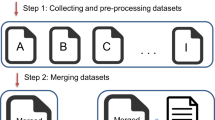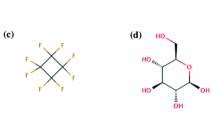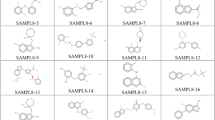Abstract
Accurate and well-curated experimental pKa data of organic acids and bases in both aqueous and non-aqueous media are invaluable in many areas of chemical research, including pharmaceutical, agrochemical, specialty chemical and property prediction research. In pharmaceutical research, pKa data are relevant in ligand design, protein binding, absorption, distribution, metabolism, elimination as well as solubility and dissolution rate. The pKa data compilations of the International Union of Pure and Applied Chemistry, originally in book form, have been carefully converted into computer-readable form, with value being added in the process, in the form of ionisation assignments and tautomer enumeration. These compilations offer a broad range of chemistry in both aqueous and non-aqueous media and the experimental conditions and original reference for all pKa determinations are supplied. The statistics for these compilations are presented and the utility of the computer-readable form of these compilations is examined in comparison to other pKa compilations. Finally, information is provided about how to access these databases.


Similar content being viewed by others
References
Aqueous pKa compilation by Williams R (document compiled by Jencks WP, added to by Westheimer FH). http://research.chem.psu.edu/brpgroup/pKa_compilation.pdf. Accessed 11 Mar 2014
Aqueous pKa compilation with some dimethyl sulfoxide values by Ripin DH, Evans DA. http://www2.lsdiv.harvard.edu/labs/evans/pdf/evans_pKa_table.pdf. Accessed 11 Mar 2014
pKa values in dimethyl sulfoxide compilation by Bordwell FG. http://www.chem.wisc.edu/areas/reich/pkatable/index.htm. Accessed 12 Mar 2014
Links to tables of pKa values in non-aqueous solvents taken from literature by Leito I. http://tera.chem.ut.ee/~ivo/HA_UT/ Accessed 12 Mar 2014
Albert A (1963) Ionization constants of heterocyclic substances. In: Katritzky AR (ed) Physical methods in heterocyclic chemistry. Academic Press, New York
Ritschel WA (1972) pKa values and some clinical applications. In: Francke D, Whitney H (eds) Perspectives in clinical pharmacy, 1st edn. Drug Intelligence Publications, Hamilton, pp 325–367
Smith S, Rawlins M (1973) Appendix C. Variability in human drug response, 1st edn. Butterworths, London, pp 154–165
Speight T (1987) Avery’s drug treatment, 3rd edn. Publishing Sciences Group Inc, Littleton, pp 1352–1380
Hoover J (1976) In: Dispensing of Medication, 8th edn. Mack Publishing, Easton, PA, p. 230, 247, 418–426, 468–634.
Newton D, Kluza R (1978) pKa values of medicinal compounds in pharmacy practice. Drug Intell Clin Pharm 12:546–554
Craig P (1990) In: Hansch C, Sammes P, Taylor J (eds) Compendium of drugs, in comprehensive medicinal chemistry, 1st edn. Pergamon Press, New York, pp 237–965
Williams D (1995) Appendix A-1. In: Foye W, Lemke T, Williams D (eds) Principles of medicinal chemistry, 4th edn. Williams and Wilkins, Baltimore, pp 948–961
Delgado J, Remers W (2000) pKas of drugs and reference compounds. In: Delgado J, Remers W (eds) Wilson and Gisvold’s textbook of organic medicinal and pharmaceutical chemistry, 8th edn. Lippincott-Raven, Philadelphia
Prankerd RJ (2007) In: Brittain HG (ed) Profiles of drug substances, excipients and related methodology volume 33, 1st edn. Academic Press, London
Liao C, Nicklaus M (2009) Comparison of nine programs predicting pKa values of pharmaceutical substances. J Chem Inf Model 49:2801–2812
Manchester J, Walkup G, Rivin O, You Z (2010) Evaluation of pKa estimation methods on 211 druglike compounds. J Chem Inf Model 50:565–571
Cox BG (2013) Acids and bases solvent effects on acid–base strength, 1st edn. Oxford University Press, Oxford
Perrin DD (1965) Dissociation constants of organic bases in aqueous solution, 1st edn. Butterworths, London
Perrin DD (1972) Dissociation constants of organic bases in aqueous solution, supplement, 1st edn. Butterworths, London
Kortum G, Vogel W, Andrussow K (1961) Dissociation constants of organic acids in aqueous solution, 1st edn. Butterworths, London
Serjeant E, Dempsey B (1979) Ionisation constants of organic acids in aqueous solution, 1st edn. Pergamon Press, Oxford
Izutsu K (1990) Acid–base dissociation constants in dipolar aprotic solvents, 1st edn. Blackwell Scientific Publications, Oxford
IUPAC books of experimental pKa values of organic acids and bases in both aqueous and non-aqueous solvents as searchable pKa databases by Slater AM. http://pkadata.com. Accessed 13 March 2014
SMILES—A Simplified Chemical Language. http://www.daylight.com/dayhtml/doc/theory/theory.smiles.html. Accessed 14 March 2014
Tautomer enumeration using QuacPac by OpenEye Scientific Software. http://www.eyesopen.com/quacpac. Accessed 14 March 2014
Partition coefficient definition. http://en.wikipedia.org/wiki/Partition_coefficient. Accessed 14 March 2014
Bandura AV, Lvov SN (2006) The ionization constant of water over a wide range of temperatures and densities. J Phys Chem Ref Data 35:15–30
ACD Labs internal pKa database. http://www.acdlabs.com/products/percepta/predictors/pka/. Accessed 14 March 2014
BioByte raw data. http://www.biobyte.com/bb/Prices_2.html. Accessed 14 March 2014
pKa Prospector, search software from OpenEye Scientific Software. http://www.eyesopen.com/pka-prospector. Accessed 14 March 2014
Acknowledgments
The author would like to thank Peter Kenny, Andrew Grant, David Cosgrove, Thorsten Nowak, Anthony Nicholls, Joe Corkery, Huw Jones, Martin Harrison, Nicola Colclough, Philip Jewsbury, Andrew Poirrette, Neil Hales and Sandra McLaughlin for discussions, help and encouragement before and during the conversion of the IUPAC books into computer-readable form.
Author information
Authors and Affiliations
Corresponding author
Rights and permissions
About this article
Cite this article
Slater, A.M. The IUPAC aqueous and non-aqueous experimental pKa data repositories of organic acids and bases. J Comput Aided Mol Des 28, 1031–1034 (2014). https://doi.org/10.1007/s10822-014-9764-9
Received:
Accepted:
Published:
Issue Date:
DOI: https://doi.org/10.1007/s10822-014-9764-9




